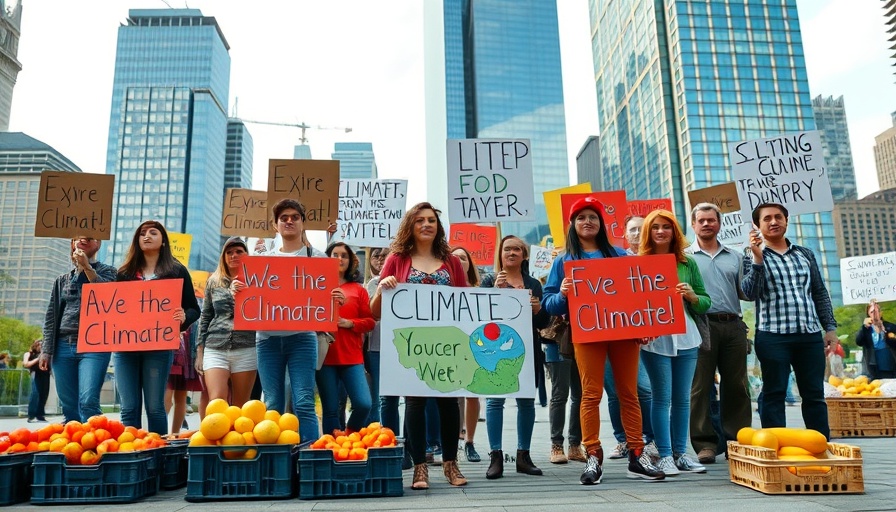
How Corporate Emissions are Driving Economic Losses
As heatwaves intensify across the globe, it’s clear that climate change is no longer a distant threat—it’s an ongoing crisis affecting economies and livelihoods. In South Korea, new research reveals that merely ten of the country’s largest corporations have been linked to an astounding $119.6 billion in economic damages due to extreme weather from 2011 to 2023. Leading the charge are steelmaking giant POSCO and Korea Electric Power Corporation (KEPCO), both of which embody the industrial might that comes with significant environmental responsibilities.
The Prolific Impact of Polluting Corporations
According to the non-profit Solutions for Our Climate (SFOC), these ten firms are responsible for roughly half of South Korea's greenhouse gas emissions over the past twelve years. Notably, KEPCO and its subsidiaries contributed an estimated $101 billion in damages from heatwaves alone. This revelation not only highlights the economic ramifications of corporate emissions but also underscores the urgent need for greater accountability in South Korea’s energy and industrial sectors.
Climate Change and Its Economic Footprint
South Korea’s latest economic statistics reveal a troubling trend: this summer’s heatwaves and resulting floods will likely increase consumer goods prices by at least 0.3 percentage points. Key sectors struggling under this strain include agriculture and construction, highlighting the interconnections between climate volatility and economic vitality. For instance, the price of napa cabbage, essential for making kimchi, surged by an astonishing 52% in just a month due to climate-driven supply disruptions. Consequently, livestock deaths rose sharply, exacerbating the challenges faced by farmers and consumers alike.
Legal Action: Farmers Standardizing Climate Accountability
In a pioneering move, a group of six farmers has filed South Korea's first corporate climate lawsuit against KEPCO, demanding compensation for the extensive losses they have endured as a result of climate change. Their claim, amounting to approximately $72.9 billion, not only seeks reparation but also aims to spark wider discussions about corporate responsibility and environmental policies. This legal milestone underscores the growing recognition among communities that the costs associated with climate change should not solely fall on the shoulders of individuals but on the corporations that significantly contribute to emissions.
Looking Forward: Future Implications for Corporate Policies
As awareness of environmental issues crescendos, it is pivotal for corporations to adopt practices that genuinely reflect sustainability principles. Industries must pivot towards cleaner energy sources and sustainable practices to mitigate their carbon footprints. Renewable energy adoption, inefficiencies in production, and transitioning to a circular economy are vital steps towards reducing environmental damage and aligning business strategies with the urgent needs of sustainability.
Wider Call to Action
The findings from this research serve as a clarion call for stakeholders across industries. The spotlight is now on corporations to redefine their roles from mere economic entities to responsible corporate citizens. Individuals can contribute to eco-friendliness by supporting brands that prioritize sustainable development, thereby fostering a collective movement toward responsible consumption. In the words of climate advocates, 'Every action counts, and profitability should never come at the expense of our planet.'
To decrease individual carbon footprints and support sustainable initiatives, consider committing to an eco-friendly lifestyle. Embrace renewable energy sources in your home, reduce waste through recycling and composting, and support businesses dedicated to sustainable practices. Together, through informed choices and community action, we can foster an environment that prioritizes sustainability and ecological balance.
 Add Row
Add Row  Add
Add 



Write A Comment